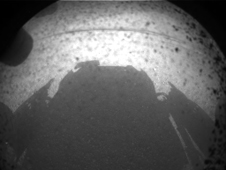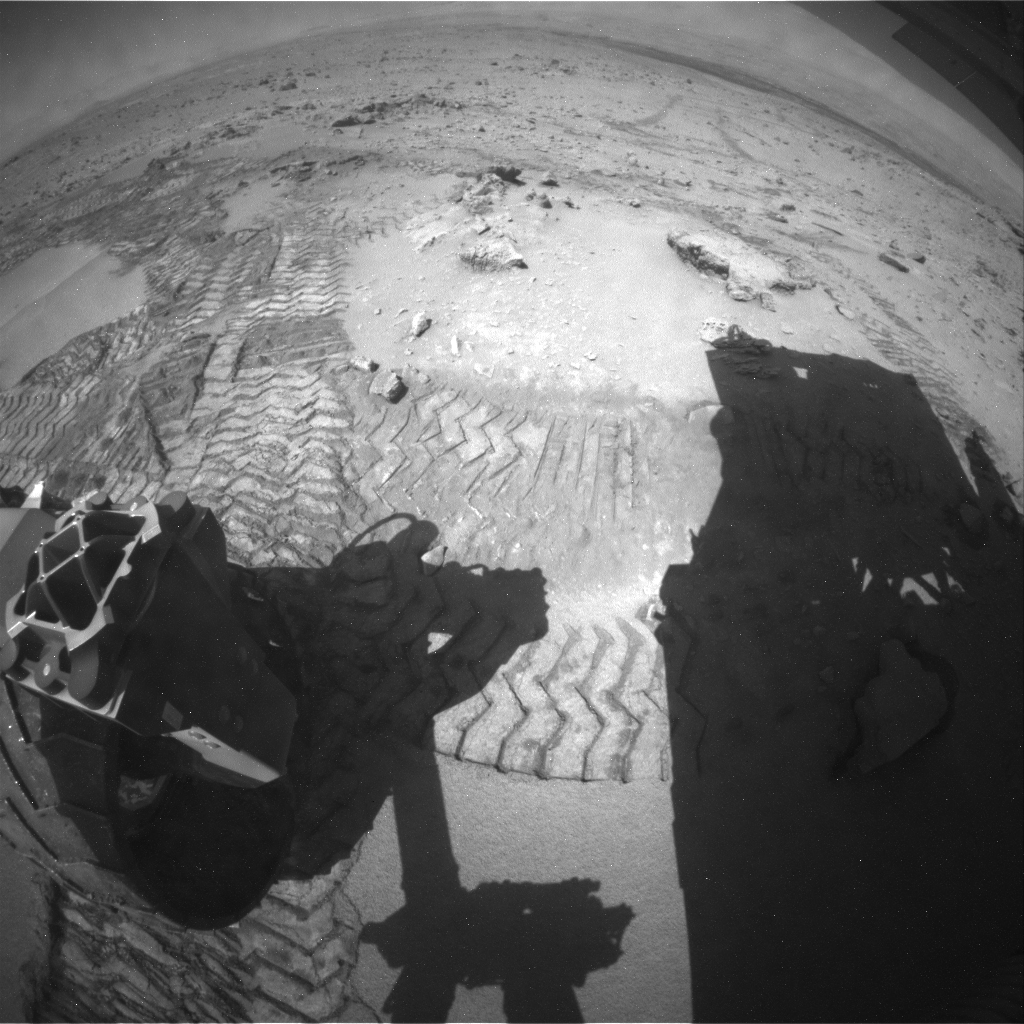
This morning August 6th, after fourteen years of planning and months of anxious waiting, the Curiosity mars rover has landed, sending as a proof of its success a fisheye picture of pebbles, dust, and its own shadow on the surface of Mars.
It is the largest and most advanced machine to ever land on another planet. In its one-ton iron belly pounds a nuclear heart. From now on, it will talk to us, across millions of kilometers, about Mars’ past. And since every story also contains a wish for its own pursuance, it will also tell us about its future, about our future, on Mars and on Earth.
Curiosity shall look for water, condition of life, and for methane, trace of life as we know it. It will perhaps give more ground for our dreams of a new life on Mars, a human life. But it can also corroborate our hidden fear: knowing that where life once had been, remains only iron dust. A foreboding of a future in which Earth, too, is only home to the shadows of whispering machines.
